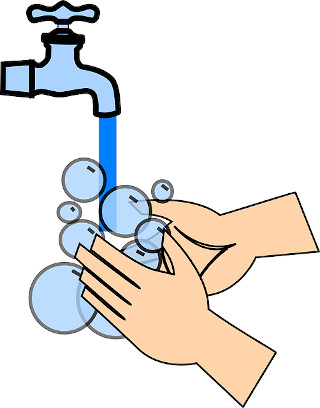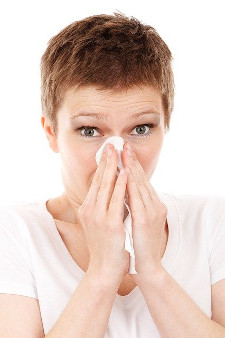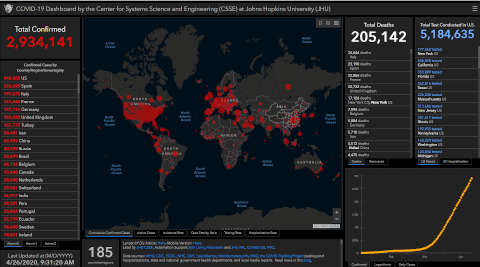What are the Coronavirus Symptoms?
Prepare and Protect Yourself from the COVID-19 Outbreak!
Latest Guidance and Advice from the CDC and WHO.
Find information about the COVID-19 coronavirus symptoms, how does it infect people, and what can you do to protect yourself, and prevent the spread of coronavirus COVID-19 disease. Direct links to the sources from the Centers for Disease Control and Prevention (CDC) and the World Health Organization (WHO). *Coronavirus symptoms*
COVID-19 LIVE MAP – Johns Hopkins University
Live Coronavirus COVID-19 Map of Global Cases by Johns Hopkins University mapping tool with info on total confirmed and recovered cases as well as total deaths caused by the novel coronavirus. Click on the Coronavirus COVID-19 Map bellow to check up to date information on current coronavirus confirmed and death cases.
The first humans with COVID-19 coronavirus symptoms and disease started to appear at the end of 2019 in China. COVID-19 is a respiratory disease that is caused by a newly detected coronavirus, according to the World Health Organization (WHO). That means there is not yet natural herd immunity or a vaccine that can prevent the rapid spread of the COVID-19 that causes the coronavirus symptoms and disease among human beings.
And indeed, currently, the coronavirus COVID-19 is spreading around the world with accelerated speed. The CDC already confirmed the first cases infected with the coronavirus COVID-19 in the USA. And, unfortunately, the first confirmed death in the U.S. form the COVID-19 – as we write this post.
Presently, the COVID-19 coronavirus disease is in the news every day and every hour. The reports are that people with coronavirus symptoms and confirmed infections around the world are rising. The total number of deaths cases from this disease is rising too.
How does COVID-19 coronavirus spread?
In addition to the new factual information about the coronavirus COVID-19 outbreak coming up every day, and while there are some explanations from the authorities on how this virus spreads and what are the coronavirus symptoms – it is a newly discovered coronavirus in humans. And spreading, infecting, protecting, symptoms, and treatment are still being researched and developed. Here is what the CDC has published:
Current understanding about how the virus that causes coronavirus disease 2019 (COVID-19) spreads is largely based on what is known about similar coronaviruses. COVID-19 is a new disease and there is more to learn about how it spreads, the severity of illness it causes, and to what extent it may spread in the United States.
Also, it looks like you can get the coronavirus COVAD-19 from someone who does not have symptoms, does not feel sick but is infected and carry the virus.
Some spread might be possible before people show symptoms; there have been reports of this occurring with this new coronavirus, but this is not thought to be the main way the virus spreads.
All this gives you many reasons to be concerned. Plus, with so many media sources with information about the coronavirus outbreak that is 24/7, being updated and clarified makes the situation even more confusing. A headline like “Oregon coronavirus infection becomes the third case of unknown origin in the U.S.” makes you worry even more about how the coronavirus is spreading.
By now, probably you are wondering how to prevent yourself from catching the COVID-19 coronavirus. And what is the probability that you or your loved ones will get sick if the outbreak continues?
First, in summary, here what CDC says about how the coronavirus is transmitted.
1. Person-to-person spread
The virus is thought to spread mainly from person-to-person.
Between people who are in close contact with one another (within about 6 feet).
Through respiratory droplets produced when an infected person coughs or sneezes.
These droplets can land in the mouths or noses of people who are nearby or possibly be inhaled into the lungs.
2. Spread from contact with infected surfaces or objects
It may be possible that a person can get COVID-19 by touching a surface or object that has the virus on it and then touching their own mouth, nose, or possibly their eyes, but this is not thought to be the main way the virus spreads.
Source: CDC How COVID-19 Spreads
Person to person spreading is when someone carrying the virus starts sneezing or coughing, sending respiratory droplets containing the virus in the air. If you are around the infected person within 6 feet away, you can breathe those droplets, and you can become infected.
Person to person transmission of the coronavirus includes spreading it by handshaking or hand to hand spreading. If you shake hands with an infected person or touch an object or surface that already has droplets with the coronavirus on it, then DO NOT TOUCH your mouth, nose, or eyes because you can get infected. That is how authorities explain the COVID-19 spread – like most other respiratory known viruses. Except that it is one is considered to be highly contagious; in other words, all indications are that COVID-10 coronavirus spreads very quickly.
How to Protect Yourself from Coronavirus Infection?
As has been noted, currently, there is no vaccine or natural herd immunity to prevent coronavirus disease COVID-19. Avoid being exposed to the coronavirus. This is the best way to prevent illnesses caused by coronavirus.
CDC list of preventive actions
Here is a list of preventive actions recommended by the CDC (Centers for Disease Control and Prevention):
- Avoid close contact with people who are sick.
- Avoid touching your eyes, nose, and mouth.
- Stay home when you are sick.
- Cover your cough or sneeze with a tissue, then throw the tissue in the trash.
- Clean and disinfect frequently touched objects and surfaces using a regular household cleaning spray or wipe.
- Follow CDC’s recommendations for using a facemask.
- CDC does not recommend that people who are well wearing a facemask to protect themselves from respiratory diseases, including COVID-19.
- Facemasks should be used by people who show symptoms of COVID-19 to help prevent the spread of the disease to others. The use of facemasks is also crucial for health workers and people who are taking care of someone in close settings (at home or in a health care facility).
- Wash your hands often with soap and water for at least 20 seconds, especially after going to the bathroom; before eating; and after blowing your nose, coughing, or sneezing.
- If soap and water are not readily available, use an alcohol-based hand sanitizer with at least 60% alcohol. Always wash hands with soap and water if hands are visibly dirty.
Source: CDC Coronavirus Disease 2019 (COVID-19) Prevention & Treatment
According to the CDC and WHO, one of the most important steps you can take to protect yourself and others from getting the coronavirus COVID-19 is to WASH YOUR HANDS WITH SOAP AND RUNNING WATER.

Washing your hands is probably the best protective measure you can take to minimize the risk of getting the coronavirus and becoming ill. Wash your hands with soap and water frequently. And it is also important to do so before and after certain actions and events like:
- before eating
- before preparing food
- after coughing or sneezing
- after toilet use
- after touching animals
- when caring for the sick
- when hands are unclean

Advice on protecting yourself and others from getting the coronavirus symptoms and becoming ill is similar to the advice CDC is giving on its webpages.
Use common sense and avoid contact with people that are coughing, sneezing, or are visibly sick. Always cover your mouth and nose when coughing or sneezing. Use a tissue and throw it in a closed bin. Do not spit in public places.
If you have the coronavirus symptoms seek medical care immediately.
Source: WHO Coronavirus disease (COVID-19) advice for the public
Myth busters are part of the WHO advice about how to protect yourself and others from the coronavirus most efficiently. Those myth-busting answers are in response to the questions from the concerned public about the COVID-19 who are worried about getting coronavirus symptoms and becoming ill.
For example, the WHO does not advise using a hand dryer to get rid of the coronaviruses. They are not effective in killing the new coronavirus. Also, using an ultraviolet disinfecting lamp in order to kill potential coronavirus on your hands or body skin can do more harm than help. The UV radiation can irritate your skin.
And by the way, do not spray alcohol or chlorine all over your body. Such action would not kill coronaviruses already entered in your body through the mouth.
And last but not least, the answer to one of the most asked questions by Americans: Is it safe to receive a package from China? The answer is Yes.
The WHO data and previous analysis show that coronaviruses do not survive long on objects like packages. In other words, packages and letters coming from China should not bring you the coronavirus.
Hopefully, this HAFH post gives you a better understanding of the current coronavirus COVAD-19 situation, what to do to protect yourself and your family.
If you are affected by the coronavirus disease outbreak and you need help check our 50 States Help Guide about assistance and resources from the US Government, 50 States, Local Charities, and Community Action Agencies.
Coronavirus (COVID-19) Helping Info, Guidance, and Advice from the CDC and WHO. Learn About the CDC Recommended Steps You Can Take to Protect Yourself and Your Loved Ones.
